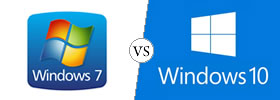Difference between Ajax and PHP
Key difference: AJAX stands for Asynchronous JavaScript and XML. It is a group of web development programs used to design websites. The programs create interactive web applications using a combination of XHTML for basic programming, CSS for styling, DOM for interaction, data exchange using XML and XSLT, XMLHttpRequest and JavaScript. PHP, on the other hand, is a server-side scripting language that has its main implementation in web development. However, it can be used as a general-purpose programming language.
.jpg) AJAX stands for Asynchronous JavaScript and XML. It is a group of web development programs used to design websites. The programs create interactive web applications using a combination of XHTML for basic programming, CSS for styling, DOM for interaction, data exchange using XML and XSLT, XMLHttpRequest and JavaScript. AJAX enables web pages to send data to and receive data from a server without changing or hindering the web page itself. AJAX eliminates the need for the customers to wait, making interaction between the customer and the server asynchronous.
AJAX stands for Asynchronous JavaScript and XML. It is a group of web development programs used to design websites. The programs create interactive web applications using a combination of XHTML for basic programming, CSS for styling, DOM for interaction, data exchange using XML and XSLT, XMLHttpRequest and JavaScript. AJAX enables web pages to send data to and receive data from a server without changing or hindering the web page itself. AJAX eliminates the need for the customers to wait, making interaction between the customer and the server asynchronous.
Google is the biggest known supporter of AJAX and has invested millions of dollars to advance it. Major Google products, such as Orkut, Gmail, Google Suggest, and Google Maps are AJAX applications. Amazon has also launched it’s own search engine, A9, on AJAX.
Ajax is not a single technology. It is a group of technologies. Jesse James Garrett, the one who coined the term, AJAX, lists the various technologies incorporated in AJAX:
- HTML (or XHTML) and CSS for presentation
- The Document Object Model (DOM) for dynamic display of and interaction with data
- XML for the interchange of data, and XSLT for its manipulation
- The XMLHttpRequest object for asynchronous communication
- JavaScript to bring these technologies together
.jpg) PHP, on the other hand, is a server-side scripting language that has its main implementation in web development. However, it can be used as a general-purpose programming language. PHP was originally created by Rasmus Lerdorf in 1995 and it is currently managed by The PHP Group. PHP originally stood for Personal Home Page, however it was later renamed. It now stands for PHP: Hypertext Preprocessor, a recursive acronym. PHP is free software released under the PHP License, as is incompatible with the GNU General Public License (GPL) due to restrictions on the usage of the term PHP.
PHP, on the other hand, is a server-side scripting language that has its main implementation in web development. However, it can be used as a general-purpose programming language. PHP was originally created by Rasmus Lerdorf in 1995 and it is currently managed by The PHP Group. PHP originally stood for Personal Home Page, however it was later renamed. It now stands for PHP: Hypertext Preprocessor, a recursive acronym. PHP is free software released under the PHP License, as is incompatible with the GNU General Public License (GPL) due to restrictions on the usage of the term PHP.
PHP is an open source, server-side, HTML embedded scripting language. It can basically perform any task that other CGI programs can, but it is mainly used to create dynamic Web pages. Its main advantage is that it is compatible with many types of databases. Furthermore, PHP can talk across networks using IMAP, SNMP, NNTP, POP3, or HTTP.
PHP includes a command-line interface capability and can be used in standalone graphical applications. PHP commands can be embedded directly into an HTML source document rather than calling an external file to process data. In the HTML document, the PHP script is enclosed within special PHP tags. Due to these tags, the programmer can alternate between HTML and PHP instead of having to rely on heavy amounts of code to output HTML. Also, as PHP is executed on the server, the client cannot view the PHP code.
Some differences between Ajax and PHP:
- Ajax is an Asynchronous JavaScript XML. It is a group of interrelated web technologies. While, PHP is a Hypertext processor that is a general scripting language which produces dynamic web pages.
- Ajax is not a stand alone technology. It is a group of technology, while PHP is a stand alone technology.
- Ajax needs a specific platform and operating system to run, whereas PHP can run on any platform and operating system.
- Ajax is difficult to develop on static pages, while PHP is easy to develop on static pages..
- Ajax will only run if the browser supports JavaScript or XMLHttpRequest, whereas PHP does not require much support.
Image Courtesy: esublimeinfosystems.com, itvedant.com









Add new comment